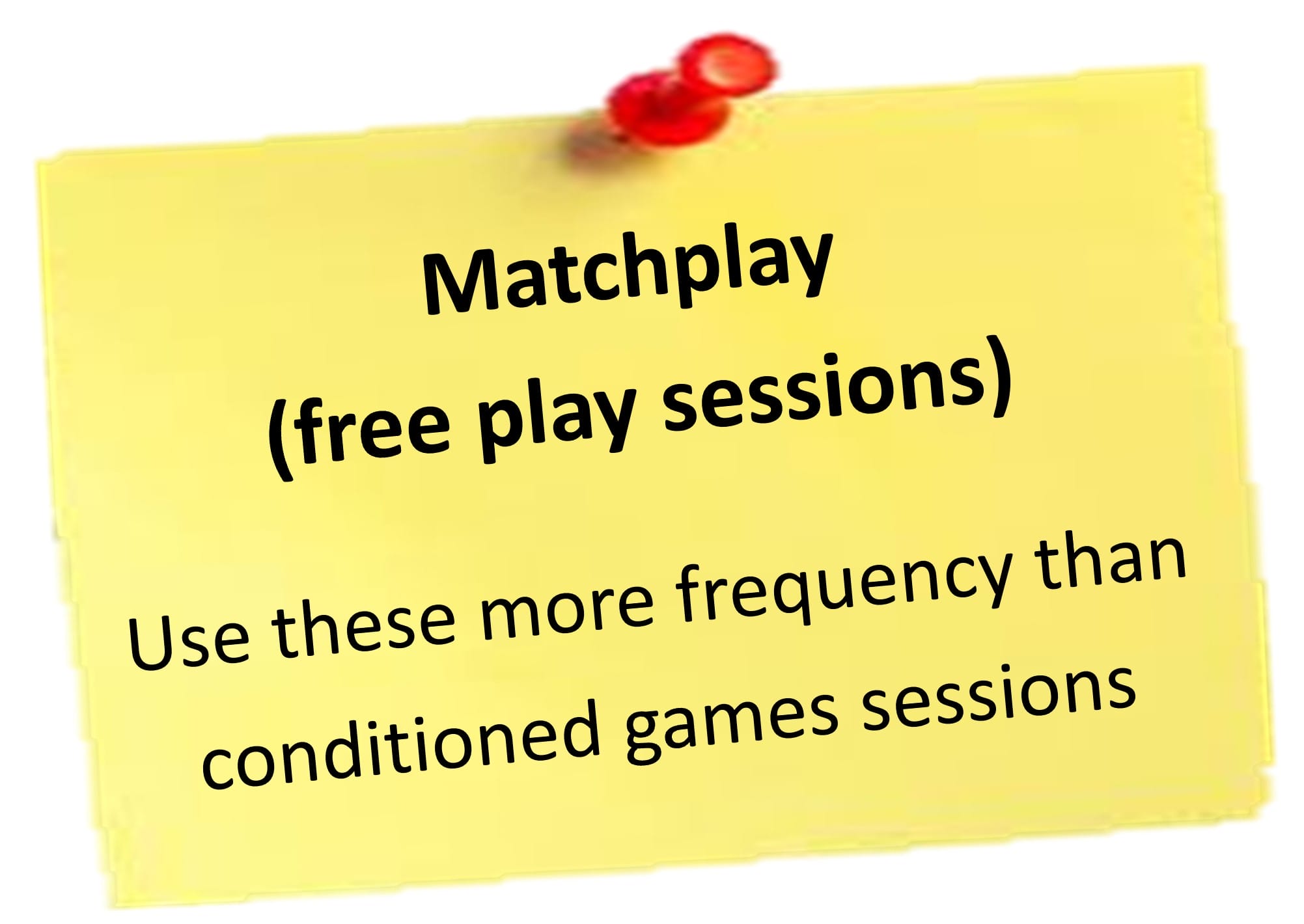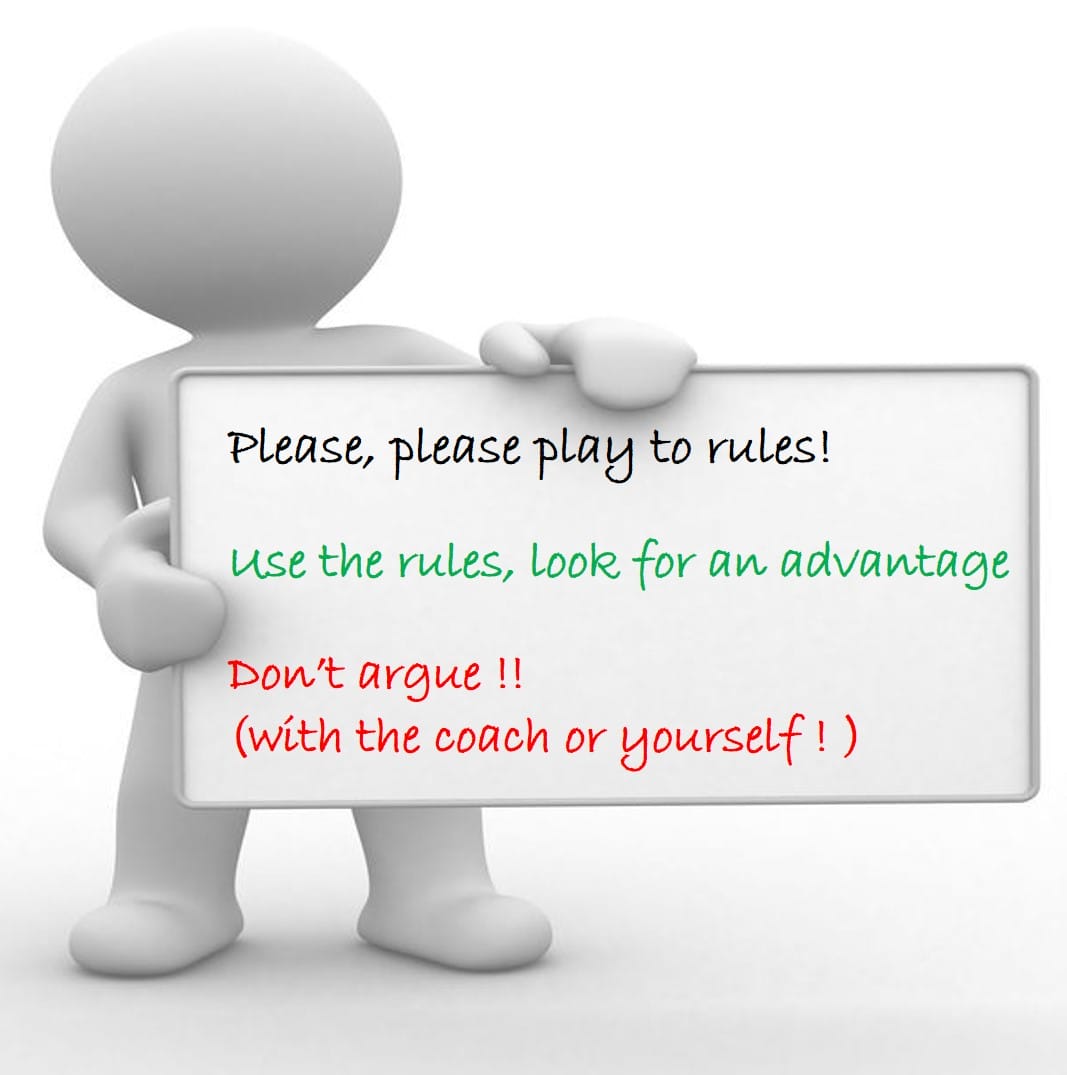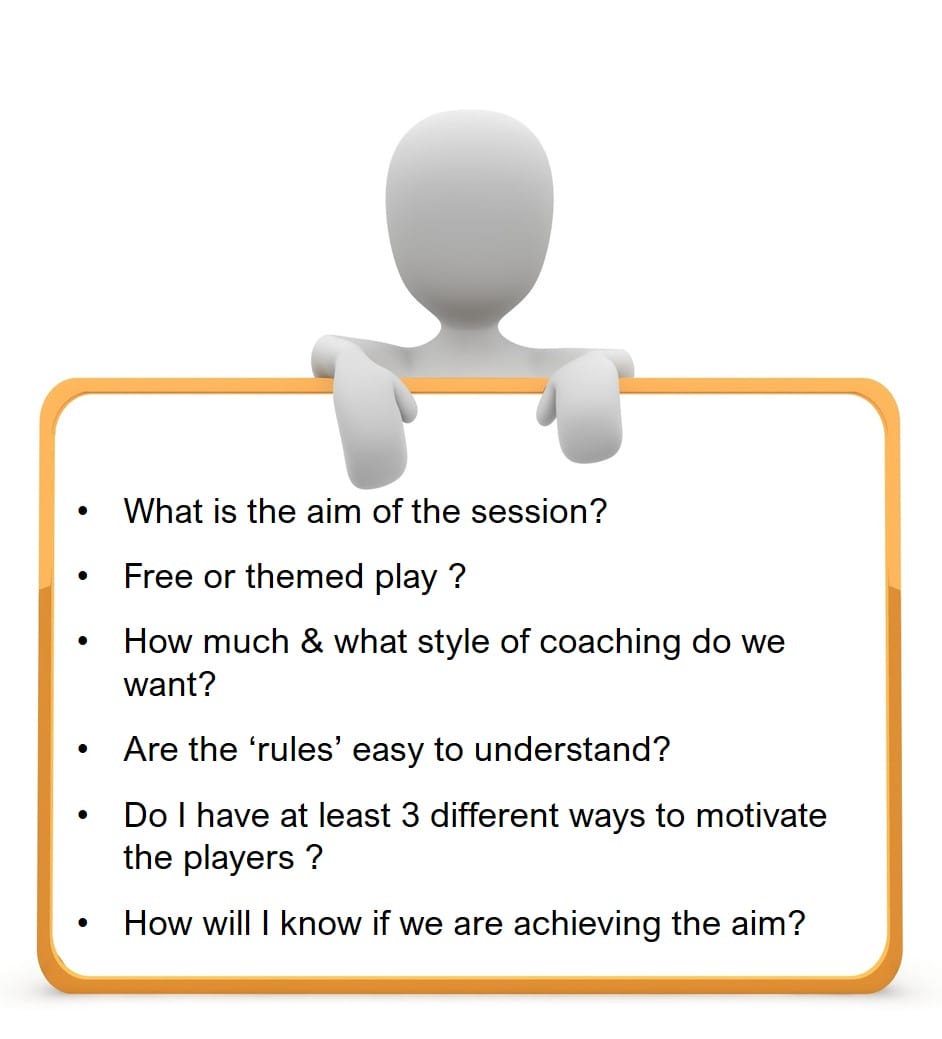The coaches guide to designing a Badminton sparring session : part 2
Part 2 : The frequent questions I get asked about badminton sparring sessions
I wonder if you will agree with my replies and those from Part 1
Hopefully, you will want to follow the advice and guidelines
An effective session is more than just playing matches
But how preparation is required to create a great session
Have you read Part 1 : question 1 – 7
Click this image if you want to go and read it now. You will find some of the key coaches question about how to deliver a great badminton sparring session. I hope will give you lots of ideas and thoughts
I think that it’s vital for coaches and organisers to use a set of guidelines?
If you are looking for 100% answers then stop reading now
You will have to make judgements for yourself: that’s coaching 🙂
– – – – – – – – – – – – – – – – – –
How would you reply, what advice would you give?
Part 2
8. Some of my players will not ‘compete’ in the games
9. What themes can I use in the games?
10. How important are ‘free play’ sessions?
11. Why use bonus points rather than deductions?
12. What themes and rules should I avoid?
13. What rules should I include?
14. Is there a list of critical elements and questions I should be using when designing the session?
15. How much coaching should be done in sparring sessions?
16. Are there any tests for the effectiveness of the sparring session?
– – – – – – – – – – – – – – – –
8. Some of my players will not ‘compete’ in the games!
 Yes, it’s true. During the sparring session, some of your players may not compete and some may not even try to win!
Yes, it’s true. During the sparring session, some of your players may not compete and some may not even try to win!
There are many reasons why, but all need to be considered and addressed. I started to write down all the different reasons I’ve seen and heard but the list kept growing and I didn’t want to explore it here.
For now, I hope that you can create your own solutions. My advice at this time would be to introduce the advantages of sparring in all its forms to your junior players. Encourage them to be adventurous, brave and understand what development in practice means.
If you are working with more senior ‘established’ players, convincing them may be much harder for you, but of course, it is possible. Work with players individually and as a group and look for opportunities to change their mindsets. I wish you well if you have this issue in your group.
Do you believe that some of your players don’t try in sparring sessions?
– – – – – – – – – – – – – – – –
9. What themes can I use in the games?
There are 2 types of games to play but within each, there are multiple variations
.. Free play
.. Themed play (sometimes called conditioned games)
 Free play
Free play
As I’ve said before, even though there may not be any rules/conditions, that doesn’t mean that players aren’t playing without strategies. Of course they are, they are using the tactics, the mindsets that they choose.
Many of the tactics and strategies they use could be very similar to the conditioned games they have played previously. That should be the case, IF, the previous experiences were worthwhile.
The difference in free play is that both players will be selecting and creating their own tactics. Plus they will NOT be known to the opponents and sometimes not also known to the coach. However, with a good coach/player relationship I would expect the coach to have an awareness of what is being tried.
Themed / Conditioned Games
I would expect every coach or group organiser to have a written list of games that they feel are useful for development and be able to create mini variations of these games.
 For every game created there should be these key points
For every game created there should be these key points
– The name of the game if it’s not free play
– Does the game look and feel like a real match?
– Are players able to make game-like decisions and hit winners at any part of the rally?
– Can your players identify the purpose of the game and how it can be replicated in a real competition?
– Can players still win without achieving ‘bonus points’? (if they are part of the game)
– Does the game reward the positive player
– Do you have 1 or more variations prepared?
If you have signed up for the Badmintonandy email that will give you early notification of new posts?
When you do you will receive a free Conditioned Games download. Hopefully, this will have given you some ideas to incorporate into your own ideas.
Look out for a future post explaining all about the Pros & Cons of Conditioned games
– – – – – – – – – – – – – – – –
10. How important are ‘free play’ sessions?
Free play or Matchplay sessions are very important
 Be careful of using conditioned games too much. Some players just love to play and be competitive within normal rules.
Be careful of using conditioned games too much. Some players just love to play and be competitive within normal rules.
You may experience frustration and pushback if the majority of your sessions have conditions.
Ensure that the players understand the purpose of the session, even match play sessions can benefit from the organiser explaining the aims and giving some directions to the players. Consider if you’d wish to emphasise any of these possible aims/ themes
- “Free play means that you can decide how you want to play. I’d recommend that you make a decision of how you want to play (tactically)”
- “Why not consider trying something new and assessing if it’s worthwhile”
- “We will not be recording scores today only who wins”
- “Games will be played to 15 or 21, if there is the 3rd set it will only be played to 11 or 15 (agree prior to the session)”
- “Be your own coach today and assesses your performance as you would in a competition, don’t be a passenger in the games”
Match-play (no rules or conditions) should form the majority of your sparring
– – – – – – – – – – – – – – – –
11. Why use bonus points rather than deductions or ‘lets’ ?
 I prefer to use bonus points rather than deductions, I really don’t like ‘lets’.
I prefer to use bonus points rather than deductions, I really don’t like ‘lets’.
In all games, I believe that the use of rewards is key to encouraging a competitive and realistic environment. Ok, I accept that in a real match there are no bonus points.
However, the emotion gained from achieving say a 3 point bonus (in a game to 11) could replicate that important, hard-won point in a close competitive match.
The aim is to incentivise players with bonus points so that they plan, prepare and execute within the rally to achieve them. It’s great preparation for tournaments and using a game plan.
I’ve found that there are more frustrations, and arguments when points are deducted or let’s played.
Do you agree with me that bonus points have a possibility to create positive play, however deductions and let’s can be viewed as a punishment?
Reward not punish – do you agree?
– – – – – – – – – – – – – – – –
12. What themes and rules should I avoid?
This is a tough question as it depends on the playing standard, the aim of the session and the previous knowledge/experience of the players.
 Some rules work in one setting and then don’t in another, even creating arguments where previously there were smiles and enthusiasm.
Some rules work in one setting and then don’t in another, even creating arguments where previously there were smiles and enthusiasm.
Here are my general rules to follow
- Players must still be able to win games, even by NOT scoring bonus points. So a rule of “you only score if you do .. X .. ” should be avoided
- Excluding a part of the court completely throughout a rally is not desirable. If players wish to do this themselves within free play games, of course that’s acceptable.
- Stick to normal badminton rules as much as possible. Certainly avoid “you can’t score until you have done x,y,z”
What rules do you not like?
– – – – – – – – – – – – – – – –
13. What rules should I include?
 I’d rather you have rules and guidelines
I’d rather you have rules and guidelines
Please discuss each one with your players and ensure that as far as possible people understand that each one is designed to help them get the most from the session.
However, they may not realise it at the time you introduce the rule! Don’t worry but be prepared 🙂
Rules
- Be competitive: even if the theme doesn’t suit you make it a competitive tough game
- Play with the theme (condition): use it, work with it, try to benefit from it
- No arguments: if you have a problem explain what it is but don’t just become grumpy and argue
- What is winning for you: Winning isn’t always essential
- Ask if you are confused: do you any questions that require a response ASAP
How do you inform everybody about the session rules?
– – – – – – – – – – – – – – – –
14. Is there a list of critical elements and questions that I could use when designing the session?
 Questions
Questions
- What is the aim of the session
- Who will set the aim – it doesn’t just have to be the coach
Considerations
- What is the session duration: ensure that everyone gets a roughly equal share
- The nearness of competition – is it immediately before a big event or part of a training block?
- Free or themed play: both are acceptable but refer back to the aim
- Will there be coaching: it’s always possible to coach, but in what form/context
Test Questions
- Does the game look and feel like a real match?
- Are players able to make game-like decisions and hit winners at any part of the rally?
- Can players still win without achieving ‘bonus points’? (if they are part of the game)
- Do the players understand the game within a few attempts?
- Do you have 1 or more variations prepared? (hopefully a minimum of 3)
- Can you identify the purpose of the game and how it can be replicated in a real competition?
How often do you review your sparring games against a list of guidelines?
– – – – – – – – – – – – – – – –
15. How much coaching should be done in a badminton sparring session?
The short answer is lots. But it depends on what you mean by coaching
 In preparation: it is very important to create the desired environment, think of that as coaching
In preparation: it is very important to create the desired environment, think of that as coaching
During the session: there are different ways to ‘coach’, how many of these have you considered
- No coaching, no interaction: just coach observations and feedback at the next session, not this one
- 2 coaches working: sitting behind the court as in a competition
- Group coaching: discussion at the start explaining what is required and guidelines about how to go about it
- Group summary: discussions throughout about the session, the effects of certain strategies/tactics and what you could try
- Individual work: everyone is aware that you will be giving hints and tips to players that need them, but not to everybody
It’s important to prepare your players in how you will act as the coach
Don’t assume they know
– – – – – – – – – – – – – – – –
16. Are they any tests for the effectiveness of the sparring session?
What was the aim of the session and what does your ‘gut’ tell you, was it achieved?
 You must decide how to go about judging the effectiveness of your sparring sessions.
You must decide how to go about judging the effectiveness of your sparring sessions.
You could ask the players
- What do you like & dislike about this game?
- How would today help you in a real competition?
- What variations would you introduce to these matches?
- If you still have questions, what are they?
Ask yourself & your team
- Did the players understand the aim of the session?
- How quickly did they understand the games (rules) or were they too complex
- Would I use the games again in a future session?
- Did everyone compete as we hoped for?
- Have I enjoyed today? 🙂
If you ask questions be prepared for replies!



 Free play
Free play For every game created there should be these key points
For every game created there should be these key points

